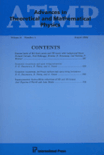
Advances in Theoretical and Mathematical Physics
Scope & Guideline
To unlock the mysteries of physics through mathematics.
Introduction
Aims and Scopes
- Quantum Field Theory (QFT) and Topological Quantum Field Theory (TQFT):
The journal publishes research on various aspects of quantum field theory, including novel formulations of QFT, the study of non-semisimple TQFTs, and their applications in understanding physical phenomena. - Geometric and Algebraic Structures in Physics:
Papers often explore the geometric underpinnings of physical theories, such as Calabi-Yau manifolds, Ricci flow, and the role of algebraic structures in quantum gravity and string theory. - Mathematical Foundations of Gravity and Space-Time Theories:
Research in this area investigates the mathematical formulations of general relativity, including the canonical formalism and asymptotic properties of space-time, contributing to the understanding of gravitational theories. - Advanced Topics in String Theory and M-Theory:
The journal features studies on string theory, M-theory, and their mathematical frameworks, including dualities, topological aspects, and implications for high-energy physics. - Machine Learning and Computational Techniques in Physics:
A growing interest in applying machine learning techniques to solve complex problems in theoretical physics, such as calculating Calabi-Yau metrics, emphasizes the journal's commitment to innovative methodologies.
Trending and Emerging
- Chiral and Topologically Ordered States:
Research on chiral topologically ordered states is gaining traction, indicating a growing interest in condensed matter physics and its connections to quantum field theories and mathematical structures. - Machine Learning Applications in Physics:
The increasing use of machine learning techniques to derive insights from complex physical models represents a significant trend, showcasing the integration of computational methods with theoretical physics. - Holography and AdS/CFT Correspondence:
The study of holographic principles and their implications for quantum gravity and condensed matter systems is becoming more prominent, reflecting ongoing interest in dualities and geometric interpretations in theoretical models. - Quantum Gravity and Non-Perturbative Approaches:
There is a noticeable shift towards non-perturbative methods in quantum gravity research, suggesting a collective move toward understanding quantum spacetime through advanced mathematical frameworks. - Interplay of Geometry and Physics in String Theory:
The exploration of geometric structures in string theory, such as Calabi-Yau manifolds and their applications, is increasingly featured, highlighting a deepening relationship between geometry and physical theories.
Declining or Waning
- Classical Theories of Gravity:
The exploration of classical gravity theories has become less frequent, as the focus shifts towards quantum gravity and its mathematical descriptions, indicating a preference for more modern approaches. - Basic Quantum Mechanics:
Research centered on fundamental aspects of quantum mechanics is appearing less often, possibly due to the community's increasing interest in more complex and abstract theories like QFT and string theory. - Traditional Algebraic Geometry Applications:
While still relevant, traditional applications of algebraic geometry without direct connections to physical theories are being overshadowed by more integrated approaches that involve topological and geometric methods.
Similar Journals

Cambridge Journal of Mathematics
Unveiling the Depths of Mathematical KnowledgeCambridge Journal of Mathematics, published by INT PRESS BOSTON, INC, is a premier platform for the dissemination of cutting-edge research in the field of mathematics. With an ISSN of 2168-0930 and E-ISSN 2168-0949, this journal stands out in a competitive academic landscape, currently ranked #58 out of 399 in General Mathematics, placing it in the top 15% within its category according to Scopus metrics. The journal serves as a vital resource for researchers, professionals, and students alike, aiming to foster groundbreaking mathematical inquiries and foster collaboration across disciplines. Published from 2020 to 2024, the Cambridge Journal of Mathematics is committed to maintaining high standards of scholarship, making it an essential read for those who are passionate about advancing mathematical knowledge and its applications.
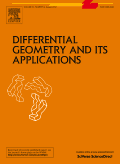
DIFFERENTIAL GEOMETRY AND ITS APPLICATIONS
Charting New Territories in Mathematical ApplicationsDIFFERENTIAL GEOMETRY AND ITS APPLICATIONS, published by Elsevier, is a premier academic journal primarily focused on the intricacies of differential geometry and its wide-ranging applications in various fields, including mathematics and theoretical physics. Established in 1991 and currently exploring relevant advancements through 2024, this journal serves as a vital platform for disseminating high-quality research that integrates theory and computational methodologies.With an ISSN of 0926-2245 and an E-ISSN of 1872-6984, it holds a significant position within the mathematical community, evidenced by its current quartile ranking of Q3 in major categories such as Analysis, Computational Theory and Mathematics, and Geometry and Topology. While open access options are not available, the journal's contributions are pivotal for researchers seeking to enrich their understanding of complex geometrical frameworks and their practical applications. As the landscape of differential geometry evolves, this journal stands out as a crucial resource for fostering innovation and collaboration among scholars and practitioners alike.
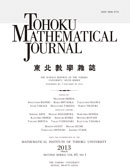
TOHOKU MATHEMATICAL JOURNAL
Championing Excellence in Peer-Reviewed MathematicsTOHOKU MATHEMATICAL JOURNAL, published by TOHOKU UNIVERSITY, is a distinguished academic journal committed to the advancement of mathematical research. Established in 1949, the journal has sustained a long-standing tradition of disseminating high-quality, peer-reviewed articles that contribute significantly to various branches of mathematics. With its scope encompassing a broad range of topics within the field, TOHOKU MATHEMATICAL JOURNAL aims to foster intellectual exchange and innovation among mathematicians worldwide. Though currently not an open-access publication, it is indexed in Scopus, holding a respectable Q2 ranking in the miscellaneous mathematics category as of 2023, which signifies its relevance and influence in the academic community. Researchers, professionals, and students alike will find valuable insights and contemporary developments that reflect the journal's dedication to excellence in mathematical scholarship.
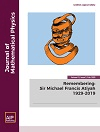
JOURNAL OF MATHEMATICAL PHYSICS
Fostering collaboration in the realm of mathematical inquiry.Welcome to the JOURNAL OF MATHEMATICAL PHYSICS, a distinguished publication dedicated to the burgeoning fields of mathematical physics and statistical and nonlinear physics, published by AIP Publishing. Established in 1960, the journal continually showcases cutting-edge research and theoretical advancements that drive the understanding of complex systems and mathematical formulations within physics. With an impressive Scopus ranking of #38 in Mathematical Physics and #39 in Statistical and Nonlinear Physics, the journal is recognized for its vital contributions to the academic community, achieving a solid Q2 quartile ranking in both categories for 2023. While not an open-access journal, it remains a critical resource for researchers, professionals, and graduate students seeking insights into rigorous mathematical methods and their applications in physical sciences. Engage with the finest research as we converge toward new frontiers from 1960 to 2024, fostering academic collaboration and innovation.

MICHIGAN MATHEMATICAL JOURNAL
Elevating Scholarship through Innovative Mathematical DiscoveriesThe MICHIGAN MATHEMATICAL JOURNAL is a prestigious and influential publication in the field of mathematics, founded by the University of Michigan. With an ISSN of 0026-2285 and an E-ISSN of 1945-2365, this journal is recognized for its high-quality research and has achieved a commendable Q1 ranking in the category of Mathematics (miscellaneous) as of 2023. Published by the esteemed Michigan Mathematical Journal, it provides a platform for the dissemination of innovative mathematical theories and findings, playing a crucial role in advancing knowledge and scholarship within the mathematical community. With coverage spanning from 1996 to 2024, the journal emphasizes rigorous theoretical development and fosters collaboration among researchers, professionals, and students alike. While not an open-access journal, its contributions are invaluable for those looking to stay abreast of cutting-edge mathematical research.
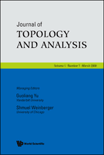
Journal of Topology and Analysis
Fostering Collaboration in Advanced Mathematical DisciplinesJournal of Topology and Analysis, published by WORLD SCIENTIFIC PUBL CO PTE LTD, is a distinguished peer-reviewed journal that focuses on advanced topics in mathematics, specifically within the fields of topology and analysis. Established in 2009 and running through 2024, the journal is based in Singapore and strives to present cutting-edge research that contributes to the mathematical community's understanding of geometric structures and analytical theories. Holding a respected position with a Q2 ranking in Analysis and a Q3 ranking in Geometry and Topology according to the 2023 category quartiles, the journal is indexed in Scopus, where it ranks #49 in Geometry and Topology and #118 in Analysis, showcasing its significance in the scholarly landscape. The Journal of Topology and Analysis aims to foster interdisciplinary collaboration by providing a platform for researchers, professionals, and students to share innovative findings and insights. Although it does not currently offer open access, its contributions are vital for advancing knowledge in these mathematical domains.

Revista Matematica Complutense
Championing High-Impact Research in MathematicsRevista Matematica Complutense is a prestigious peer-reviewed journal published by SPRINGER-VERLAG ITALIA SRL, specializing in the field of mathematics. With its ISSN 1139-1138 and E-ISSN 1988-2807, the journal plays a vital role in disseminating high-quality research and fostering academic discussion within the mathematics community. Recognized for its rigorous selection process, the journal has achieved impressive rankings, holding a Q1 quartile status in the miscellaneous mathematics category as of 2023 and ranking #94 out of 399 in general mathematics according to Scopus, placing it within the 76th percentile. With a publication timeline spanning from 2008 to 2024, the Revista Matematica Complutense continues to serve as an essential resource for researchers, professionals, and students alike. Although it does not currently offer open access, the journal remains committed to advancing mathematical knowledge and providing a platform for innovative research across various mathematical disciplines.

REVIEWS IN MATHEMATICAL PHYSICS
Advancing Knowledge in Mathematical and Statistical PhysicsREVIEWS IN MATHEMATICAL PHYSICS is a premier scholarly journal published by WORLD SCIENTIFIC PUBL CO PTE LTD, focusing on the versatile and dynamic field of mathematical physics. Established in 1996, this journal has quickly become a pivotal resource for researchers and professionals seeking in-depth analyses and reviews of contemporary advancements in both mathematical and statistical physics. With an impressive categorization in Q2 for both Mathematical Physics and Statistical and Nonlinear Physics as of 2023, it ranks among the top in its field, boasting a Scopus Rank of #27 in Mathematical Physics and #29 in Statistical and Nonlinear Physics. While currently not available as an open-access platform, the journal remains valuable for its rigorous peer-reviewed articles that aim to bridge the gap between theoretical aspects and practical applications in physics. Given its significant influence—evidenced by a robust footprint in the academic community—REVIEWS IN MATHEMATICAL PHYSICS is essential reading for anyone dedicated to advancing their knowledge and understanding of complex physical phenomena.
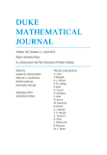
DUKE MATHEMATICAL JOURNAL
Elevating Mathematical Discourse Since 1935DUKE MATHEMATICAL JOURNAL, published by DUKE UNIVERSITY PRESS, stands as a premier journal in the field of Mathematics, with an esteemed reputation reflected in its Q1 ranking in Mathematics (miscellaneous) for 2023 and its status as one of the top 50 journals in General Mathematics according to Scopus rankings. Since its inception in 1935, this journal has committed to publishing high-quality research that pushes the boundaries of mathematical knowledge and theory. With a broad scope that encompasses various areas within mathematics, the journal serves as a vital platform for disseminating innovative ideas and findings. Although it does not offer Open Access options, its rigorous peer-review process ensures the integrity and excellence of the work it publishes, making it an essential resource for researchers, professionals, and graduate students aiming to contribute to or stay informed about the rapid advancements in this dynamic field. For more information, visit its office at 905 W MAIN ST, STE 18-B, DURHAM, NC 27701.

REPORTS ON MATHEMATICAL PHYSICS
Illuminating the Foundations of Physical PhenomenaREPORTS ON MATHEMATICAL PHYSICS is a distinguished journal published by PERGAMON-ELSEVIER SCIENCE LTD, focusing on the intricate interplay between mathematics and physics. Established in the United Kingdom, this journal has been contributing to the academic community since its inception, publishing significant research findings that explore the theoretical underpinnings of physical phenomena. With an ISSN of 0034-4877 and an E-ISSN of 1879-0674, the journal maintains a consistent publishing history, converging research from 1970 to 2024. It is currently ranked Q3 in both Mathematical Physics and Statistical and Nonlinear Physics categories, reflecting its commitment to maintaining a high standard of scholarly work. Although it lacks Open Access options, its targeted audience of researchers, professionals, and students will find invaluable insights into advanced mathematical methods, statistical applications, and innovative approaches in physics. With its esteemed reputation and critical role in the field, REPORTS ON MATHEMATICAL PHYSICS continues to be an essential resource for those seeking to deepen their understanding of mathematical applications in physical systems.